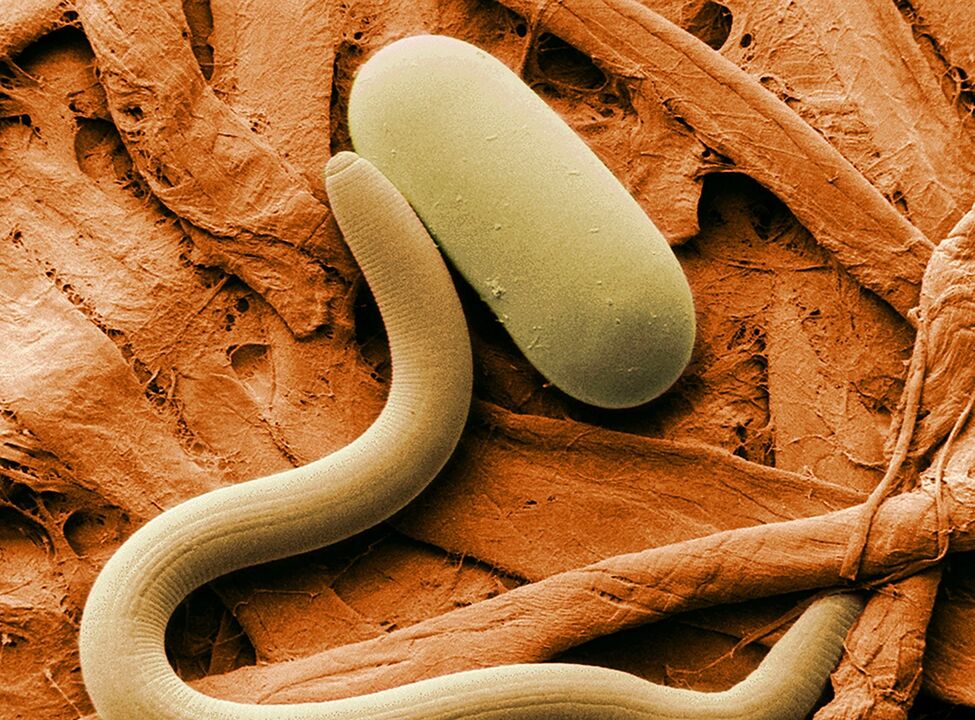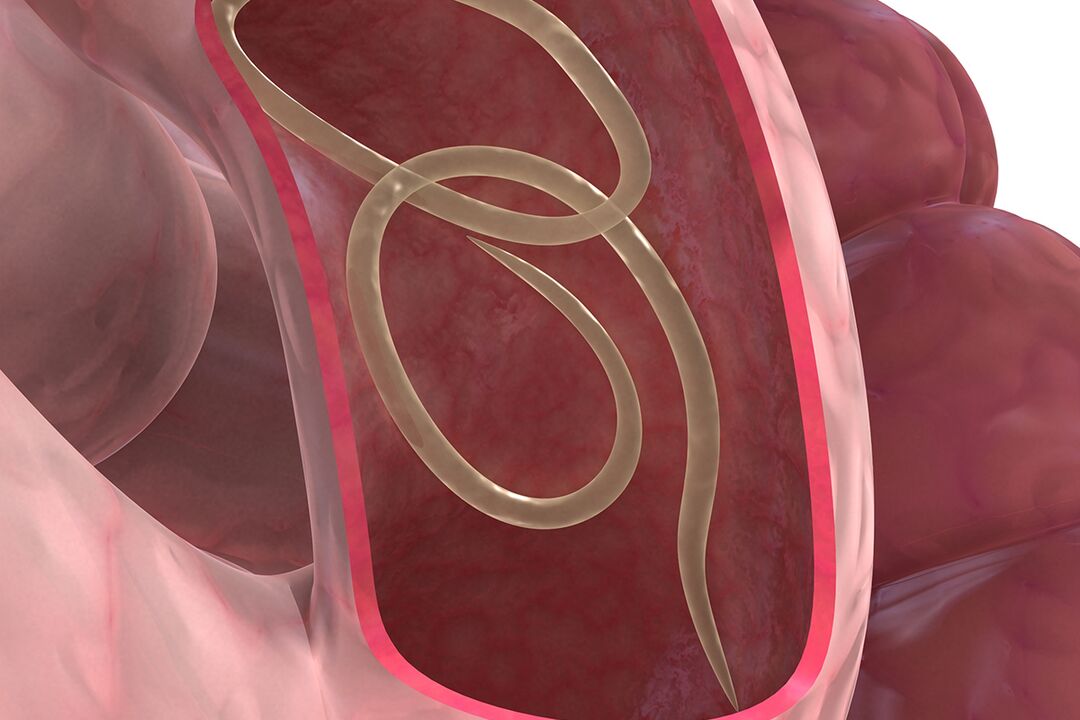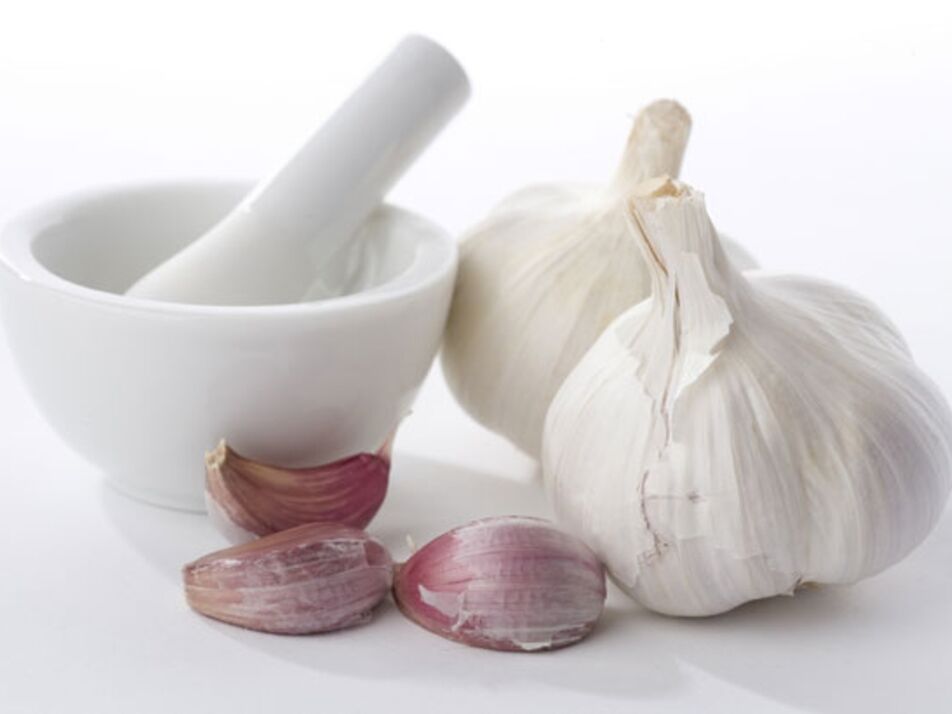Worms are representatives of the lower worms that live in the human body. The disease associated with the infection of a person with various types of worms is called helminthiasis. This disease is not uncommon and occurs among certain segments of the population. Children are susceptible to infection with pinworms, hunters - trichinella, fishermen and lovers of Japanese cuisine (raw fish in the form of sushi) suffer from diphyllobothriasis. Many diseases, paradoxically, can occur in the human body due to infection with helminthiasis. To date, the theory of the relationship between cancer and parasitic infections is one of the most relevant. In the presence of helminthiasis, symptoms do not always appear, and if, nevertheless, patients with this disease experience any unpleasant and uncomfortable sensations, they are perceived as signs of other diseases. The patient has been treated for years for pancreatitis, gastritis or colitis, not suspecting that the cause of his ailments is helminthiasis.
How infection occurs
Worms bring a lot of trouble to a person

Infection with helminths occurs as follows:
- Through unwashed hands
- On contact with soil
- after insect bites
- Because of dirty hands
- When eating raw meat and fish
- After eating unwashed fruits and vegetables
- After contact with an animal
- After contact with infected people
Mature eggs of parasites can be found in soil, water, food (raw and poorly thermally processed meat or fish). Rare cases of the disease occur due to insect bites. The mechanism of infection with helminthiasis is oral-fecal. A person swallows eggs of parasites with food, water. Contact-household methods of infection also occur. They happen when, after contact with the ground or sand, the hands were not thoroughly washed.
Vegetables and berries growing in the ground, which are not washed enough, are also a source of infection with worms. Children who play with yard and pets are at risk of becoming infected with worms. Pets roaming freely on the streets can bring helminth eggs into the house. Flies and other insects, after contact with animal feces, sitting on food, can easily transfer helminth eggs. Surprisingly, human-to-human transmission is also possible. It happens like this: the female pinworm can crawl out of the intestines and lay eggs right on the underwear, causing severe itching. A person, having combed an itchy place, can come into contact with other toilet items and household items. These items fall into the hands of other family members, after which they become infected.
Infection through water is also possible. Many parasitic eggs easily fall into open water bodies and wells. Drinking unboiled well water is extremely dangerous.
Types of helminthiasis
Helminthiases differ in the way they enter the human body:
- Biohelminths
- Geohelminths
- contagious
Biohelminths are transmitted to humans through contact with animals. Geohelminth can be infected through the soil. Contagious arise from contact with an infected person. The disease manifests itself differently depending on the method of infection, the number of worms, the degree of their adaptation in any human organ.
Stages of helminthiasis

The most destructive effect on the body is not produced by adults, but by their larvae. Adult individuals have already chosen a cozy place for themselves in the human body, and the larva travels through the organs and leaves behind their lesions. The most common habitat for parasites is the gastrointestinal tract. Different types of parasites prefer different habitats. So roundworms are located in the small intestine, and pinworms settle in the large intestine and the lower parts of the small intestine. According to the habitat of parasites, helminthiases are:
- translucent
- fabric
Translucent are located in the lumens of the genital organs, and tissue - inside the tissues. Depending on the growth, parasites can change their habitat, passing from the translucent form to the tissue one. Helminthiasis develops in two stages:
- acute
- Chronic
The acute stage lasts from a week to a month, and the chronic stage continues until cured. The acute stage begins with the introduction of the egg and continues as the parasite matures and grows. The disease is manifested by allergic reactions to a foreign organism. During the chronic stage of the disease, various reactions of the body occur. During this period, the parasite moves through the body in search of shelter. The disease is accompanied by disturbances in the functioning of organs and systems in the human body. Having integrated into the immune system of the human body, parasites consume the substances necessary for their growth and development. This leads to metabolic disorders, disorders of the digestive system, difficulty in the absorption of vitamins and minerals.
In addition to this harm, parasites spew their waste products into the human body, poisoning the body, leading to intestinal disorders, reduced immunity, and the development of bacterial infections. Parasites contribute to the risk of developing cancer. This happens due to the negative impact on the immune system, and stimulating the process of cell division. Often a patient is examined by many specialists who find a bunch of diseases in him. And in this case, only one doctor, a parasitologist, can replace all specialists.
Classification of helminths

roundworms are quite common
Types of worms in humans:
- flatworms
- roundworms
Flatworms include:
- Trematodes (opisthorchis, schistosomes, paragonim)
- Cestodes (broad tapeworm, tapeworm, echinococcus, alveococcus)
- Roundworms or Nematodes:
- Pinworm
- Ascaris
- hookworm
- Trichinella
Such a classification of helminths is presented in the medical literature. To successfully solve such a problem as helminthiasis, it is necessary to find out an in-depth description of the structure and life cycle of parasites.
Trematodes
Another name for trematodes is flukes. These parasites are flat, leaf-shaped or lanceolate with two suckers. One sucker is in the mouth, and the second, which serves for attachment, in the peritoneum. All representatives of flukes enter the body through an intermediate host. These parasites are mostly hermaphrodites.
Opisthorchises
This fluke is a worm up to 1. 3 cm long with two suckers. Opisthorchis is a hermaphrodite, parasitizing in the liver, gallbladder, pancreas in humans and in some predatory animals (foxes, dogs, cats). The eggs of opisthorchiasis leave the human or animal body with feces. When they enter the reservoir, these eggs are swallowed by freshwater mollusks, inside which the larvae hatch and develop. The process of development and maturation of larvae lasts two months. Then the larvae crawl out of the mollusk and penetrate under the skin to carp fish. After six weeks, the larvae become full-fledged mature parasites. Opisthorchis enters the body of an animal or a person after eating infected fish. This worm can live in a living organism for up to 20 years. Symptoms of opisthorchiasis:
- Allergy
- Weakness
- Headache
- Dizziness
- Depression
- Loss of consciousness
The harm caused to the body by opisthorchiasis:
- Poisoning by the waste products of the parasite
- Liver tissue damage
- Gallbladder injury
- Violation of the outflow of bile
- Inflammation of the pancreas
- Secretory dysfunctions
- Decreased stomach motility
- Thickening of the walls of some organs, the occurrence of tumors as a result.
The chronic course of the disease is characterized by:
- Heaviness after eating
- Pains
- vomit
- Nausea
Habitats of opisthorchis in rivers rich in fish:
- Kame
- Dnipro
- Neman Delta
Prevention of infection: To avoid infection with opisthorchiasis, do not eat raw fish. The larvae die during the heat treatment of products. Dried fish can only be eaten if it has been previously salted. Also, the larvae die when the fish is frozen for a long time.
Schistosomes

These parasites are heterosexual, similar to a needle from 0. 4 to 2. 6 cm long. Females are longer than males and larger, they produce 3000 eggs per day. The method of reproduction, as in the previous species of parasites, is through freshwater mollusks. The larva enters the human body through the skin, mucous membranes while swimming in a freshwater reservoir. It can also enter the body of a person who accidentally swallowed water while swimming. After a day after penetration, the larva turns into an adult and enters the peripheral veins, through which it is directed to the lungs and venous vessels. There, the schistosome reaches sexual maturity.
Schistosoma lays eggs in the intestines, mucous membranes, bladder. Then the eggs are excreted from the human body with urine or feces and begin the path of development anew. Schistosoma lives in the human body for several decades, causing harm and infecting with new individuals. The problems that arose during infection with schistosome, the human body is more caused not by adults, but by their eggs. Only half of the eggs are excreted from the body, the rest accumulate in the organs. The eggs of this parasite have spikes that damage the internal organs of a person, often ulcers occur in the infected. Patients with schistosomiasis experience the following symptoms:
- Appetite disorder
- Anemia
- Enlarged liver
- Altered spleen
- Decreased intestinal peristalsis
- Stomach ache
- constipation
- diarrhea
- Weight loss
- Intestinal bleeding
- Pain during urination
- allergies
- Weakness
When the genitourinary system is infected, patients experience:
- Menstrual irregularities and miscarriages in women
- Impotence and incomplete ejaculation in men
When eggs enter the central nervous system:
- Acute cerebral schistosomiasis
- Chronic brain damage
- Fatal outcome
Infected children experience a delay in growth and development, a decrease in school performance. Prevention of the disease includes avoiding swimming and avoiding walking barefoot in tropical waters.
Paragonim

Paragonim is a lung fluke 1 cm long with an ovoid body and red spines. This parasite multiplies in the lungs of animals and enters the human body by eating crayfish, freshwater crabs. The parasite infects the respiratory system. For patients with paragonimiasis, allergic reactions and a decrease in immunity are characteristic. Symptoms:
- Temperature rise
- Cough
- Excretion of sputum from the lungs when coughing
- Dyspnea
- In severe cases, blood and parasite eggs are present in the sputum.
- In the lungs of the patient wheezing is clearly audible.
- Prevention: exclude the use of raw crayfish and crabs.
Cestodes
Representatives of cestodes are tapeworms of various lengths. Some parasites reach gigantic sizes. On the head of these parasites there are suckers, hooks or sucking slits. These adaptations are necessary for parasites to stick to the walls of the intestine. Cestodes affect the entire human body, they are most dangerous for children who quickly develop anemia.
Echinococcus
These parasites reach a length of 5 cm and are the causative agents of Echinococcus disease. A multi-chamber representative of this type of worm is the causative agent of a disease such as alveococcosis. The disease is carried by cattle and domestic animals. When caring for these animals, the eggs of the parasite fall from their fur into the hands of people. When entering the human intestine, the parasites bite into the mucous membrane. As the parasite matures, 4 sections appear, the last of which is stuffed with eggs. These departments come off and scatter throughout the body, infecting it. The fourth section scatters eggs throughout the body.
An infected organ in a patient increases, for example, the liver. Suppuration may form. An enlarged organ can even break through the abdominal cavity. And this can lead to serious sepsis of the body and even death. Symptoms:
- Weakness
- Dizziness
- Allergic reactions to the waste products of parasites.
Echinococcus affects:
- Brain
- Spinal cord
- Eyes
- thyroid gland
- Liver
- Lungs
- uterus
This parasite can provoke the formation of tumors, including malignant ones. The most unpleasant is that the treatment of this disease is possible only surgically. Prevention: personal hygiene in contact with animals.
Nematodes
These worms with an elongated body, round or in the form of a cylinder parasitize, most often, in the children's body. These roundworms include pinworms, roundworms, hookworms.
Pinworms

These are small white worms. The length of the female is 1 cm, the male is 0. 5 cm. These parasites have a pointed tail, which is why they were called pinworms. The habitat of pinworms is the human intestine. The front end of the parasite has a sucker, with the help of which the pinworm bores the intestines, and the sharp end hangs down into the lumen and damages the walls. This disease is called enterobiasis. You can get infected from a person through dirty hands. There is a disease in preschool children attending kindergarten. A symptom of pinworm infection is itching near the anus. More often, itching is felt at night, when the female lays eggs, while releasing a special substance. Symptoms:
- Itching
- Diarrhea
- Stomach ache
- Headache
- Lack of appetite
- Prevention
- hand washing
Roundworm
These worms are the largest. The length of the female is up to 0. 5 m. The female lays 200 thousand eggs a year, regardless of the male. The mechanism of infection is fecal-oral. Ascaris eggs enter the human body along with unwashed vegetables and fruits, through dirty hands. The larva that has entered the intestine is selected from the shell and penetrates into the walls of the intestine, while migrating through the intestinal veins to the liver, through the hepatic veins to the heart, through the pulmonary arteries into the bronchi, then into the trachea and into the mouth. A partial number of larvae die in the open air, the rest are swallowed backwards. Symptoms:
- Nausea
- Vomit
- Jaundice
- pancreatitis
- Frequent acute respiratory infections
- Bronchitis
- Pneumonia
Prevention:
- hand washing
- Washing vegetables and fruits
- Personal hygiene
- Protect food from flies, cockroaches and other peddlers.
In conclusion, we can say that the cause of the disease is not always bacteria and viruses that have entered the body. Parasites can cause great harm to human health. In the event of unclear symptoms, it is not necessary to exclude the penetration of the parasite into the body, the patient needs to visit a parasitologist.



























